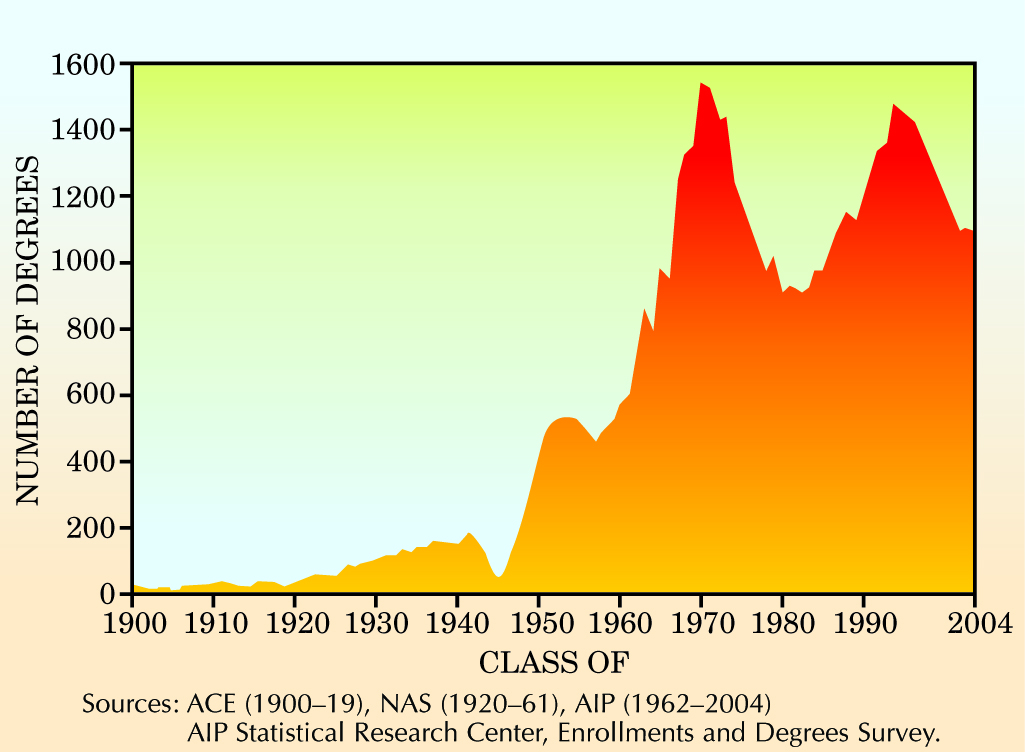Changes and Choices
DOI: 10.1063/1.2138391
Change shadows us all. Sometimes it demands our immediate attention with a tumultuous upheaval, as with the devastation of a natural disaster. Perhaps more often, however, change sneaks up in plain view until we are startled to see it staring us in the face, where it has been all along. So it is with our community and with Physics Today.
The past 10 years or so have wrought tremendous change to our science and to the world in which we practice it. Many seeds have grown slowly to create the new landscape now before us and it behooves us all to look at some aspects of our new terrain that will point to some changes in store for Physics Today.
The physics landscape
One forest our community is exploring is the integration of physics with other disciplines and other sciences. Twenty years ago, academic physics reveled in its isolation. Physics students found it nearly impossible to do interdisciplinary work that called for sharing turf with another department. Unlike industry, academic departments and funding agencies alike floundered when faced with such requests. Today, with our growing realization that physics in one form or another penetrates all of science, interdepartmental collaborations are becoming common on campuses, and many universities have launched research centers that expressly call for the participation of several disciplines and subdisciplines, including physics. It is becoming natural to see physics in places beyond its traditional boundaries.
Neither science nor research knows political borders; the international character of our community has become second nature. A few short decades ago, an international collaboration meant long waits as mail moved back and forth, expensive telephone calls, and occasional trips abroad, in addition to careful planning. Today, the globalization is made seamless by the networking capabilities of the internet, which a mere 10 years ago was still in its infancy.
Another aspect of the physics landscape, not often touched upon in academia, concerns industry. Physicists have played a big role in industrial research and continue to do so. But in modern America, another side of globalization has taken hold: Industrial manufacturing and its attendant research-based innovation have increasingly moved to other parts of the world.
Look at us now
There are many perspectives from which to consider our community’s demographics. The graph on this page gives one view, which is particularly relevant to the immediate change in store for this publication. Physics as a profession grew quickly following World War II, and looked like it would grow indefinitely following the Soviet Union’s launch of the Sputnik satellite in 1957. Since about 1970, the population of those holding physics PhDs has fluctuated, but it remains far above the pre-war levels.
With the inevitability of time, those who joined our community—indeed, defined it—during the rapid-growth phase have aged, as do we all. Sadly, that simple demographic fact of life means that the numbers of obituaries in the pages of Physics Today will continue to grow if unrestrained. Consider these data: For the 10 years 1983-92, we published 435 obituaries for an average of 36 per year. The 10 years from 1993 through 2002 saw us average 45 per year. In every year since 2001, we have published more than 60 obituaries. Already in 2005, through this month of October, 77 have appeared. The trend is unambiguous and understandable, but leaves us with a difficult choice.
Like most not-for-profit organizations, the American Institute of Physics, which publishes Physics Today, must operate with constrained resources and a tight budget. In particular, the number of pages we can publish is limited. On important occasions, such as this issue’s tribute to Hans Bethe’s life and work, exceptions must be made. Overall, though, our choice is either to continue to publish a growing number of obituaries for eminent scientists or to curtail the number of obituaries that we accept and use the pages gained to report on additional scientific advances from our large, global community.
Fortunately, the internet offers us a middle ground that we have chosen to pursue. Readers can now post brief death notices to our website, along with other material including comments and reminiscences. Thus, following some editorial review, the very human stories of individuals’ contributions and of our community’s history will be preserved and shared, and will remain available to all subscribers. In addition, in each month’s issue of Physics Today, we will publish a list of new postings to our website and perhaps a few obituaries for the most notable members of our community. We remain committed to publishing, over the next several months, all obituaries that we have agreed to run.
Change is inescapable and never easy. Still more is coming, driven in part by another element of our demographics: a new infusion of youth. Other sections of Physics Today will likely join the migration to the internet, and new departments will appear in print. Look for these other changes and choices in mid-2006.

Number of Physics PhDs Conferred in the United States from 1900 to 2004

Visit




